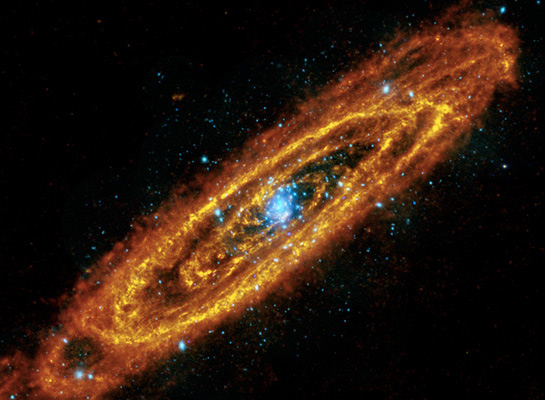
The great Andromeda Galaxy owes a bit of its beauty to a dalliance with another galaxy billions of years ago, according to new data gathered with NASA’s orbiting Hubble Space Telescope. Lying 2.5 million light-years from Earth, the Andromeda Galaxy is the closest giant spiral to our own and the largest member of the Local Group, the collection of several dozen nearby galaxies that includes our Milky Way, which ranks number second largest. The new observations reveal that Andromeda - shown here in infrared (yellow and orange) and x-rays (blue and white) - experienced a rash of star formation in its outermost disk 1.5 to 3 billion years ago , as reported in a paper in press at Monthly Notices of the Royal Astronomical Society. The likely trigger? Spiral galaxy M33 - the Local Group’s third largest galaxy, 2.8 million light-years from us?which swung by Andromeda at the time and experienced its own starburst, suggesting each galaxy’s gravity caused gas in the other to collapse and create new stars.
